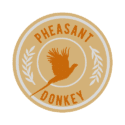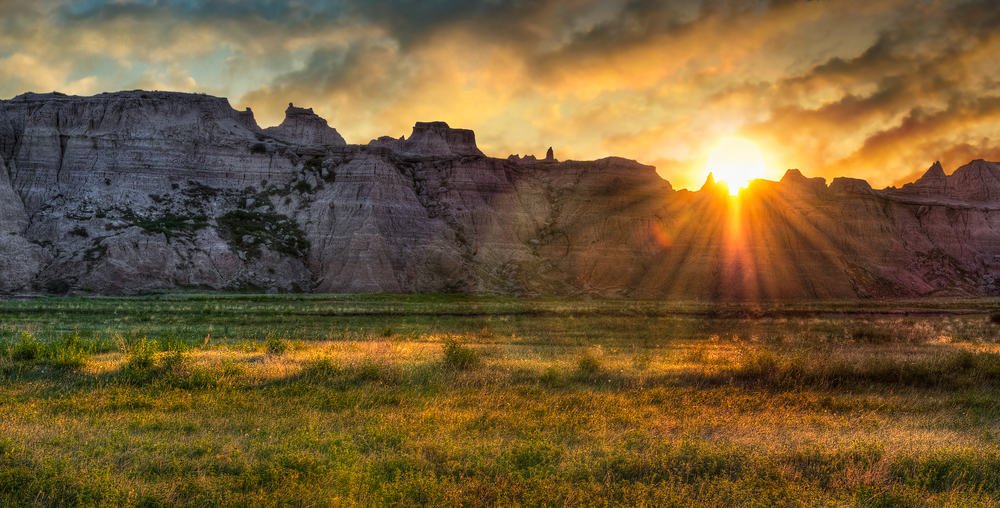Pheasant Hunting 101: Perfect Guide to Your First Bird
Imagine the crisp autumn air, the crunch of leaves underfoot, and the sudden burst of color as a pheasant takes flight. Your heart races as you raise your shotgun. This is the moment you’ve been waiting for. Let’s get you ready for pheasant hunting.
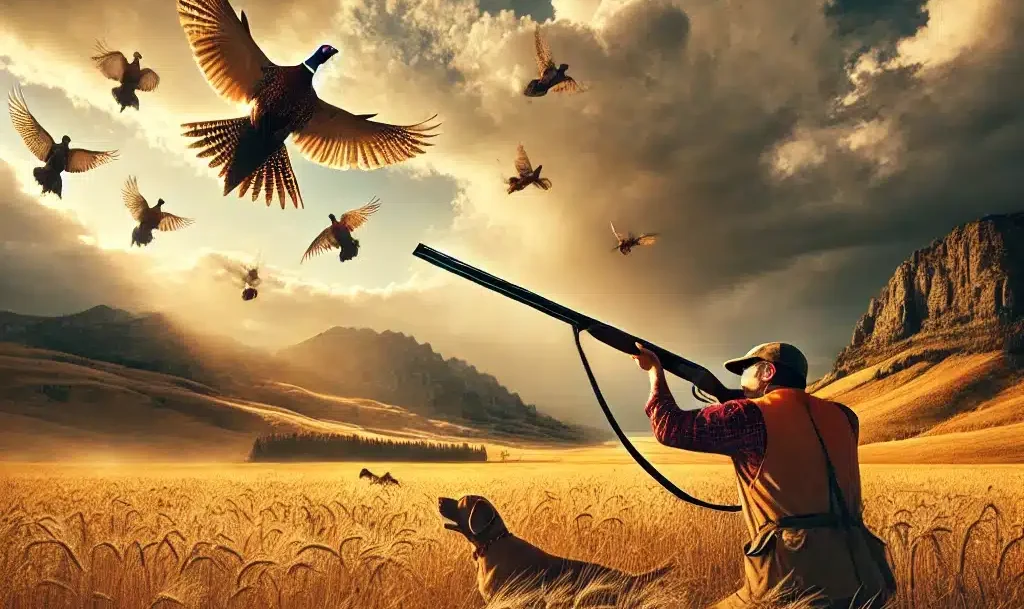
Pheasant hunting isn’t just a sport – it’s an adventure that connects you with nature and tests your skills. Whether you’re looking to try something new or carry on a family tradition, this guide will walk you through everything you need to know to get started.
Pheasant hunting has been a popular outdoor activity for generations, and for good reason. These beautiful birds are challenging to hunt, delicious to eat, and found in many parts of the country. But don’t worry if you’ve never held a shotgun before – we’ll cover all the basics, from choosing the right gear to finding the best spots to hunt.
In this guide, we’ll share tips and tricks that even seasoned hunters wish they knew when they started out. We’ll talk about how to stay safe, follow the rules, and have a great time in the field. So grab your boots, and let’s dive into the exciting world of pheasant hunting!”
This introduction aims to capture the reader’s interest, paint a vivid picture of the hunting experience, and set expectations for what the blog post will cover. It’s written in a friendly, conversational tone that should be accessible to an 8th-grade reading level while still being engaging for all ages.
Getting Started
You’re excited to start pheasant hunting, but where do you begin? Don’t worry – we’ve got you covered. Let’s talk about the basics you’ll need to hit the field.
Basic equipment needed
First things first – you don’t need a ton of fancy gear to get started. Here’s a simple list of must-haves:
- Hunting license: This is a big one! Make sure you get the right license for your state.
- Blaze orange vest and hat: Safety first! These bright colors help other hunters see you.
- Comfortable boots: You’ll walk a lot, so get something that won’t give you blisters.
- Shell bag or vest: To carry your ammo and any birds you bag.
- Game bird bag: For carrying your pheasants after you’ve got them.
Choosing the right shotgun
Now, let’s talk about the star of the show – your shotgun. If you’re just starting out, a 20-gauge shotgun is a great choice. It’s not too heavy and doesn’t kick as much as larger guns.
Some tips for picking a shotgun:
- Try before you buy: If you can, borrow different guns from friends or try them at a shooting range.
- Go for a shorter barrel: A 26 or 28-inch barrel is easier to swing in the field.
- Consider a pump-action: They’re reliable and usually less expensive than other types.
Remember, the best shotgun is the one that feels comfortable to you!
Proper clothing and footwear
Dressing right can make or break your hunting trip. Here’s what to wear:
- Layers: The weather can change fast, so dress in layers you can easily add or remove.
- Earth tones: To blend in, stick to browns, greens, and grays except for your blaze orange gear.
- Tough pants: Brush-resistant pants will protect your legs from thorns and scratches.
- Waterproof boots: Your feet will thank you when trudging through wet fields.
- Gloves: They’ll keep your hands warm and protect them from thorny brush.
Pro tip: Break in your boots before the hunt. Nobody wants blisters on their first day out!
Getting the right gear doesn’t have to be complicated or super expensive. Start with the basics; you can always add more as you get into the sport. The most important thing is to get out there and try it!
Finding Pheasants
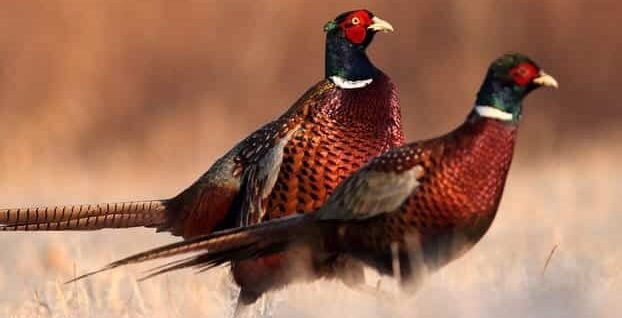
Now that you’re geared up, it’s time to find those birds! Knowing where and when to look for pheasants can distinguish between a successful hunt and a long walk in the field.
Habitat and preferred locations
Pheasants are pretty picky about where they hang out. Here’s what they like:
- Grassy areas: Tall grass is like a five-star hotel for pheasants. They love to hide in it.
- Field edges: The spots where two different types of land meet are pheasant hotspots.
- Cornfields: After harvest, pheasants love to snack on leftover corn.
- Near water: Pheasants need to drink, so check areas near streams or ponds.
- Shelterbelts: These are rows of trees planted to block the wind. Pheasants use them for cover.
Pro tip: Look for areas that have a mix of different habitats close together. Pheasants like options!
Best times of day to hunt
Pheasants have a daily routine, just like us. Knowing it can help you plan your hunt:
- Early morning: This is prime time. Pheasants are out looking for breakfast.
- Late afternoon: They return to grab dinner before roosting for the night.
- Midday: On cold days, pheasants might sun themselves in open areas.
Remember, pheasants have great eyesight and hearing. They’re always looking for danger, so move slowly and quietly.
Seasonal considerations
The time of year can change how you hunt:
- Early season (usually fall): Pheasants are more spread out. Cover lots of ground.
- Mid-season: Birds get warier. They’ll run instead of fly when startled.
- Late season (winter): Pheasants group up in heavy cover. Look in thick brush and tall grass.
Weather matters too:
- Windy days: Pheasants hunker down in sheltered spots.
- After a storm: Birds often come out to dry off and feed.
- Snow: Fresh tracks can lead you right to the pheasants.
Remember, hunting seasons and rules vary by state. Always check local regulations before heading out.
Finding pheasants takes practice and patience. Don’t get discouraged if you don’t see birds right away. Each time you’re out, you’ll learn more about where they like to hide.
Hunting Techniques
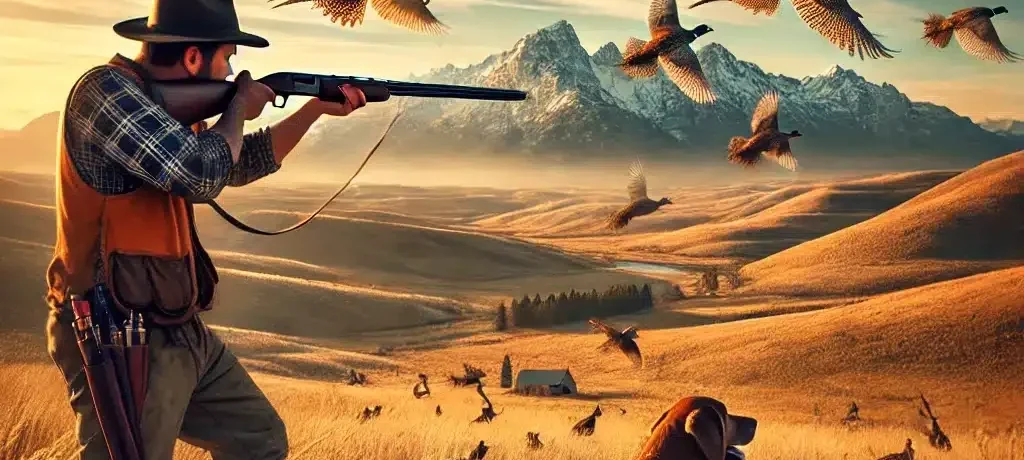
Now that you know where to find pheasants, it’s time to learn how to hunt them. There are a few different ways to go about it, and each has its own excitement.
Walking up pheasants
This is the most common way to hunt pheasants, especially for beginners. Here’s how it works:
- Walk slowly through the habitat.
- Move in a zig-zag pattern to cover more ground.
- Be ready – pheasants often burst out when you least expect it!
- When a bird flushes (flies up), raise your gun smoothly and take your shot.
Remember: Safety first! Always be aware of where other hunters are.
Tips for success:
- Walk into the wind if you can. This makes it harder for pheasants to hear you coming.
- Stop often. This can make nervous birds think you’ve spotted them, causing them to flush.
Using dogs: pros and cons
Many hunters use dogs to help find and flush out pheasants. Let’s look at the good and not-so-good parts of hunting with dogs:
- Pros:
- Dogs can smell birds you can’t see.
- They can find and retrieve downed birds.
- It’s fun to watch them work!
- Cons:
- Training a hunting dog takes time and patience.
- You need to take care of the dog’s needs in the field.
- Not all hunting areas allow dogs.
If you’re new to hunting, you might want to try without a dog first. Or, go with an experienced hunter who has a well-trained dog.
Field etiquette and safety
Hunting isn’t just about bagging birds – it’s about being responsible and respectful. Here are some important rules to follow:
- Always treat your gun as if it’s loaded.
- Know where other hunters are at all times.
- Only shoot with a clear view of your target and what’s beyond it.
- Respect property boundaries and “No Hunting” signs.
- Leave the area as clean (or cleaner) as you found it.
Golden rule: Be the kind of hunter you’d want to share a field with.
Safety tip: Agree on hand signals with your hunting partners. This lets you communicate without making noise that could scare the birds.
Remember, pheasant hunting is as much about the experience as it is about getting birds. Enjoy the outdoors, the challenge, and the company of your hunting buddies.
After the Hunt
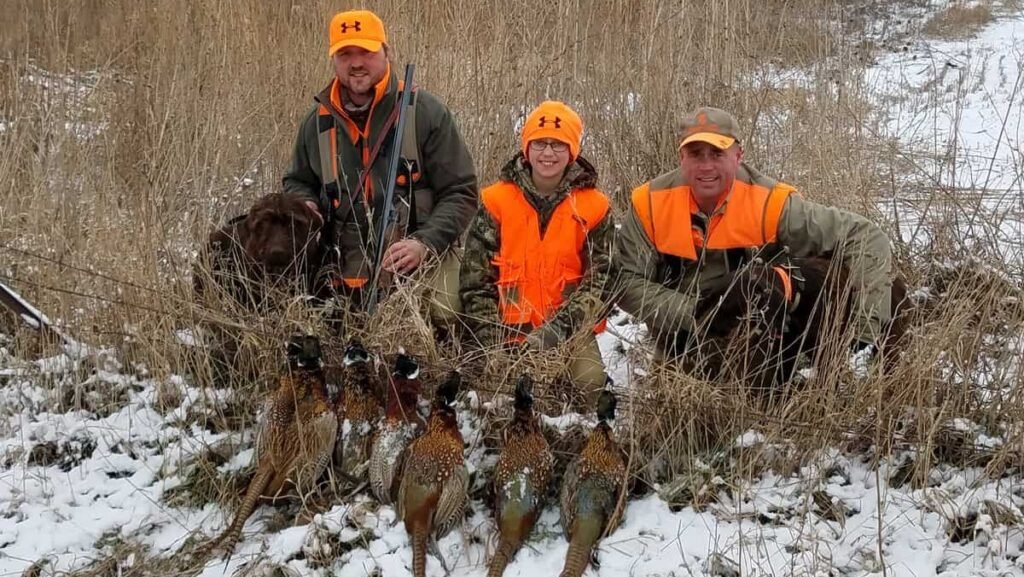
Congratulations! You’ve bagged your first pheasant. But the adventure doesn’t end here. Let’s talk about what to do next.
Field dressing your pheasant
Field dressing means removing the bird’s insides to keep the meat fresh. Here’s a simple way to do it:
- Lay the bird on its back.
- Pull the feathers off the belly area.
- Make a small cut just below the breastbone.
- Reach inside and pull out the insides.
- Keep the heart and liver if you want to eat them.
- Wipe the inside clean with a cloth or grass.
Simple cooking ideas
Pheasant is delicious and versatile. Here are some easy ways to cook your bird:
- Pheasant pot pie: This pheasant pot pie with puff pastry crust takes comfort food to a whole new level.
Smoked Pheasant and Sweet Potato Hash: This savory dish combines the smoky richness of pheasant with the sweet and earthy notes of roasted sweet potatoes and vegetables.
- Grilled pheasant: Marinate breast pieces and grill like chicken.
Cooking tip: Pheasant can be dry, so try wrapping it in bacon or basting it often while cooking.
Preserving the meat
If you’re not eating your pheasant right away, here’s how to keep it fresh:
- Refrigerate: If you eat it within a few days, keep it in the fridge.
- Freeze: For longer storage, wrap the meat tightly and freeze. It’ll last several months.
- Consider learning to can or make jerky for different ways to preserve your harvest.
Remember: Always label your stored meat with the date you got it.
Handling your harvest right means enjoying the fruits of your labor. There’s something special about eating a meal you’ve provided yourself.
Conservation and Ethics

Hunting isn’t just about the thrill of the chase or putting food on the table. It’s also about being a responsible steward of nature. Let’s talk about how we can hunt in a way that’s good for the environment and respects the sport.
Importance of following regulations
Hunting rules aren’t there to spoil your fun. They’re in place to keep wildlife populations healthy and ensure everyone has a fair chance. Here’s why they matter:
- Bag limits: These prevent overhunting and keep pheasant numbers stable.
- Hunting seasons: They protect birds during breeding times.
- License requirements: The money from licenses often goes back into conservation efforts.
Remember: Rules can change yearly, so always check before you hunt.
Supporting local wildlife habitats
Pheasants need good places to live, and we can help create them:
- Join a local conservation group: Many organize habitat improvement projects.
- Plant native grasses and shrubs on your land if you have some.
- Support farms that leave some crop stubble for wildlife.
Cool fact: Some hunters plant “food plots” for pheasants and other wildlife.
Responsible hunting practices
Being an ethical hunter means more than just following the law. It’s about respect for the land, the animals, and other hunters:
- Take clean shots: Aim to kill quickly and humanely.
- Retrieve all birds: Don’t waste what you shoot. Try to find every bird you down.
- Ask permission on private land: Always get the okay before hunting someone’s property.
- Mentor new hunters: Share your knowledge to keep the tradition alive.
- Pack it in, pack it out: Leave no trace of your visit to the field.
By following these practices, we’re not just having fun today – we’re ensuring there will be pheasants to hunt for years. It’s about balancing enjoying the sport and protecting the resources that make it possible.
As we wrap up, remember that being a good hunter means being a good conservationist. It’s all part of the bigger picture of enjoying and preserving our natural world.
Conclusion
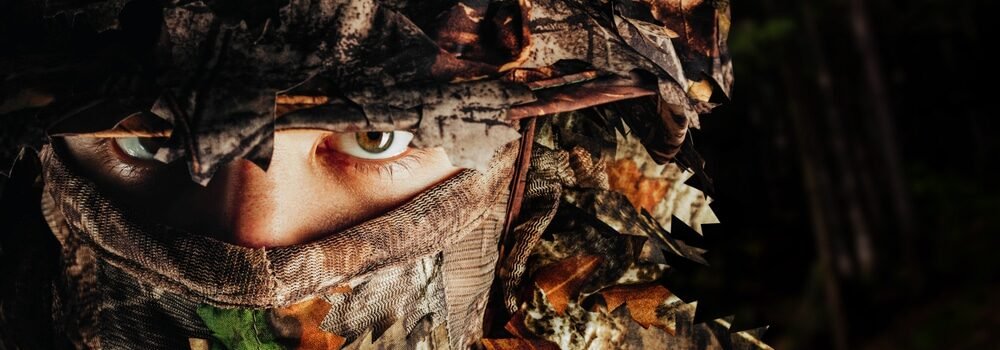
Well, there you have it – your crash course in pheasant hunting! Let’s recap what we’ve covered:
Recap of key points
- Getting Started: We discussed the basic gear you need, how to choose a shotgun, and what to wear in the field.
- Finding Pheasants: You learned about their favorite habitats, the best hunting times, and how seasons affect their behavior.
- Hunting Techniques: We covered walking up pheasants, the pros and cons of hunting with dogs, and important safety rules.
- After the Hunt: You now know how to field dress your bird, some tasty ways to cook it, and how to preserve the meat.
- Conservation and Ethics: We discussed why following regulations is crucial, how to support wildlife habitats, and what it means to be a responsible hunter.
Encouragement to try pheasant hunting
Pheasant hunting isn’t just a hobby – it’s an adventure that connects you with nature, challenges your skills, and puts food on your table. It’s a tradition passed down for generations, and now you’re part of that story.
Remember, every experienced hunter was once a beginner. Don’t be afraid to make mistakes – that’s how you learn. You’ll pick up new tricks each time you go out and get better at spotting those crafty birds.
